Milk Powder

How can I achieve a flawless base without looking cakey ?
Achieving a flawless base is every makeup enthusiast's dream. However, it can be challenging to get the perfect balance between coverage and avoiding a cakey appearance. In this guide, we will discuss some tips and techniques to help you achieve a flawless base without looking cakey. The first step in achieving a flawless base is understanding your skin type. Different skin types require different products and techniques to achieve the desired look. Here are some general guidelines for each skin type: - **Oily Skin**: Use oil-free or mattifying primers and foundations to control shine and prevent slipping. Set with a loose powder to absorb excess oil. - **Dry Skin**: Moisturize well before applying makeup and use hydrating primers and foundations that won't cling to dry patches. Avoid setting with powder on areas that tend to flake or peel. - **Combination Skin**: Use a lightweight, hydrating primer on dry areas and an oil-controlling one on oily areas. Choose a foundation that works well with both skin types and set with a translucent powder where needed. - **Sensitive Skin**: Look for hypoallergenic and fragrance-free products to avoid irritation. Test new products on a small area of skin before using them all over your face. Proper skin preparation is key to achieving a flawless base. Follow these steps before applying makeup: 1. **Cleanse**: Start by washing your face with a gentle cleanser suitable for your skin type. 2. **Tone**: Use a toner to balance your skin's pH level and prepare it for moisturizer. 3. **Moisturize**: Apply a lightweight moisturizer that suits your skin type, focusing on any dry areas. 4. **Prime**: Choose a primer that addresses your specific concerns (e.g., pore-filling, illuminating, mattifying) and apply it evenly across your face. Selecting the right foundation is crucial for achieving a flawless base without looking cakey. Consider the following factors when choosing a foundation: - **Coverage**: Determine how much coverage you need based on your concerns (e.g., blemishes, redness, discoloration). Lightweight formulas like tinted moisturizers or BB creams offer sheer coverage, while full-coverage foundations provide more substantial concealment. - **Finish**: Choose a finish that complements your skin type and desired look (e.g., dewy, matte, natural). Oily skin may prefer a matte finish, while dry skin may benefit from a dewy or satin finish. - **Shade**: Find a shade that matches your skin tone exactly. Test foundations on your jawline in natural light to ensure a seamless blend with your neck. Once you've selected the right foundation, it's time to apply it using the following techniques: 1. **Start with Less**: Begin by applying a small amount of foundation to your face and build up coverage as needed. This helps prevent over-application and ensures a more natural look. 2. **Use the Right Tools**: Choose tools that work best for your foundation type (e.g., brushes for liquid formulas, sponges for cream or mousse textures). Dampen your sponge slightly if using one to help sheer out the product and avoid streakiness. 3. **Blend Well**: Blend the foundation thoroughly into your skin, paying extra attention to areas where it tends to collect or cling (e.g., around the nose, mouth, and eyes). Use downward strokes to avoid lifting the foundation off your skin. 4. **Set with Powder**: Set your foundation with a loose powder only where necessary (e.g., T-zone) to control shine and extend wear time. Be careful not to overdo it, as too much powder can make your base look cakey. After applying your foundation, you may still have some imperfections that need concealing. Here's how to do it without adding too much product: 1. **Use Concealer Sparingly**: Apply concealer only where needed (e.g., under eyes, blemishes) using a small brush or your fingertip. Tap the product into place rather than rubbing it vigorously. 2. **Set with Powder**: Set concealer with a translucent powder to prevent creasing and ensure longevity. Again, be cautious not to layer on too much powder.
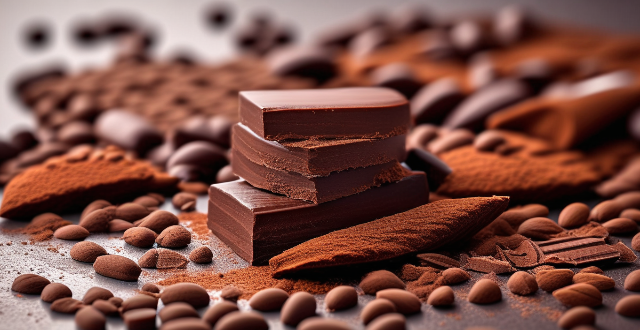
What is the secret to making soft and chewy brownies ?
The secret to making soft and chewy brownies involves using high-quality unsweetened chocolate, butter for tenderness, granulated sugar for chewiness, eggs for binding and structure, all-purpose flour for structure without toughness, cocoa powder for intensified chocolate flavor, and baking powder for leavening. Techniques include undermixing the batter, melting chocolate and butter together for smooth integration, baking at a lower temperature for a longer period to ensure even cooking, and avoiding overbaking. Add-ins like chocolate chips, nuts, or flavorings can enhance the experience. Key steps involve preheating the oven, mixing dry ingredients, melting chocolate and butter, combining wet ingredients, adding dry to wet, baking, cooling, and cutting. Tips for success include using room-temperature ingredients, avoiding overbaking, and letting the brownies rest before cutting.

Can you suggest some festive recipes for Christmas dinner ?
The text provides various festive recipes for Christmas dinner, including main courses such as roasted turkey and honey-glazed ham, side dishes like garlic mashed potatoes and green bean casserole, and desserts including pumpkin pie and gingerbread cake. Each recipe is accompanied by a list of ingredients and step-by-step instructions for preparation.

How do I make a traditional Indian curry at home ?
How to Make a Traditional Indian Curry at Home Indian curry is a flavorful and aromatic dish that can be made with various vegetables, meats, or legumes. Here's a step-by-step guide to making a traditional Indian curry at home: Ingredients: - 2 tablespoons vegetable oil - 1 onion, finely chopped - 2 garlic cloves, minced - 1 tablespoon grated fresh ginger - 2 teaspoons ground cumin - 1 teaspoon ground coriander - 1 teaspoon turmeric powder - 1 teaspoon paprika - 1 teaspoon salt - 1 can (14 ounces) diced tomatoes - 1 can (14 ounces) coconut milk - 1 pound chicken breasts or thighs, cut into bite-sized pieces - Fresh cilantro leaves, chopped (optional) Instructions: Step 1: Heat the Oil Heat the vegetable oil in a large skillet over medium heat. Step 2: Sauté the Onion Add the chopped onion to the skillet and cook until it becomes translucent, stirring occasionally. This should take about 5 minutes. Step 3: Add Garlic and Ginger Stir in the minced garlic and grated ginger and cook for another minute until fragrant. Step 4: Add Spices Add the ground cumin, ground coriander, turmeric powder, paprika, and salt to the skillet. Stir well to combine with the onion mixture. Cook for about 30 seconds until the spices are fragrant. Step 5: Add Tomatoes and Coconut Milk Pour in the can of diced tomatoes and coconut milk into the skillet. Stir well to combine all the ingredients. Bring the mixture to a simmer. Step 6: Add Chicken Add the bite-sized pieces of chicken to the skillet. Stir well to coat the chicken with the sauce. Cover the skillet with a lid and let it simmer for about 20 minutes or until the chicken is cooked through. Step 7: Garnish with Cilantro (Optional) Once the chicken is cooked, remove the skillet from heat and sprinkle some fresh cilantro leaves on top of the curry if desired. Your traditional Indian curry is now ready to serve! Enjoy it with rice or naan bread for a complete meal.
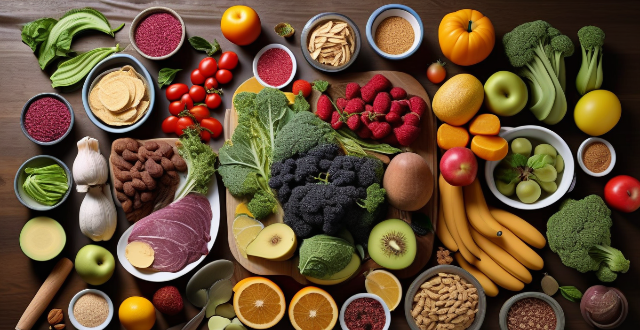
How can I make sure my breakfast is providing enough vitamins and minerals ?
Ensuring your breakfast is packed with essential vitamins and minerals requires incorporating a variety of foods, including whole grains, fruits, vegetables, and proteins. Opt for fortified foods like cereals and plant milks to boost nutritional value. Include a protein source, whether animal or plant-based, and consider what you drink, such as juices and milk. If needed, supplementation can help fill nutrient gaps under professional guidance. Planning ahead through meal prep and weekly menu planning can also ensure a balanced breakfast.

Can you suggest any delicious gluten-free recipes ?
Gluten-free recipes are becoming increasingly popular as more people are diagnosed with celiac disease or choose to follow a gluten-free diet for other reasons. Here are some delicious and easy-to-make gluten-free recipes, including pancakes, oatmeal, sandwiches, and salads.

Are there any low-calorie desserts that are also nutritious ?
There are several low-calorie desserts that are also nutritious, including fruit salad, yogurt parfait, chia seed pudding, chocolate avocado mousse, and frozen bananas. These options provide vitamins, antioxidants, protein, fiber, and healthy fats while keeping the calorie count low.

What kind of seasonings work well with different types of fish ?
This text provides a comprehensive guide to seasonings for various types of fish and shellfish, categorized by freshwater and saltwater species. It offers specific seasoning suggestions for each type of fish or shellfish, such as salmon, trout, catfish, tuna, mahi-mahi, sardines, anchovies, shrimp, lobster, crab, clams, mussels, and oysters. The suggested seasonings aim to enhance the natural flavors of the seafood while adding depth and complexity to the dishes.

What are some easy and delicious vegetarian recipes for beginners ?
Vegetarianism is a popular dietary choice, but it can be daunting for beginners to find easy and delicious recipes. Here are some simple vegetarian dishes that are perfect for those new to plant-based eating: ## **1\. Roasted Vegetable Pasta** This colorful pasta dish is packed with flavor and nutrition. **Ingredients:** * 1 cup cherry tomatoes, halved * 1 zucchini, sliced * 1 red bell pepper, sliced * 1 yellow onion, chopped * 2 garlic cloves, minced * 8 oz whole wheat pasta * 2 tbsp olive oil * Salt and pepper to taste * Fresh basil leaves for garnish **Instructions:** 1. Preheat oven to 400°F (200°C). 2. Toss the vegetables in olive oil, salt, and pepper. 3. Arrange the vegetables on a baking sheet and roast for 25 minutes or until tender. 4. Cook the pasta according to package instructions. 5. In a large bowl, combine the roasted vegetables and cooked pasta. 6. Garnish with fresh basil leaves and serve warm. ## **2\. Chickpea Curry** This creamy and flavorful curry is perfect for beginners. **Ingredients:** * 1 can chickpeas, drained and rinsed * 1 onion, diced * 2 garlic cloves, minced * 1 tbsp curry powder * 1 tsp ground cumin * 1 tsp ground coriander * 1 tsp turmeric * 1 can coconut milk * Salt to taste **Instructions:** 1. Heat a pan over medium heat and add a tablespoon of oil. 2. Sauté the onion and garlic until soft. 3. Add the spices and cook for another minute. 4. Stir in the chickpeas and coconut milk. 5. Bring to a simmer and cook for 10 minutes or until the sauce thickens. 6. Season with salt and serve hot with rice or naan bread. ## **3\. Lentil Soup** Lentil soup is hearty, nutritious, and easy to make. **Ingredients:** * 1 cup green lentils, rinsed * 1 onion, diced * 2 garlic cloves, minced * 2 carrots, diced * 2 stalks celery, diced * 4 cups vegetable broth * 1 bay leaf * Salt and pepper to taste
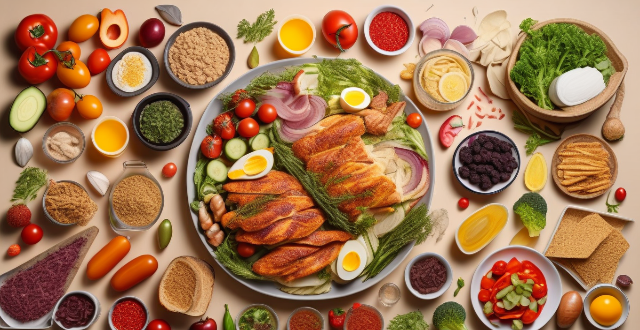
What are some healthy options for quick meals ?
When it comes to quick meals, choosing healthy options is important. There are many nutritious and fast meal ideas available, including salads like grilled chicken or quinoa salads, sandwiches with whole grain bread and veggies, stir-fries with vegetables and protein, and smoothies for a quick snack or meal. These options provide both speed and nutrition.
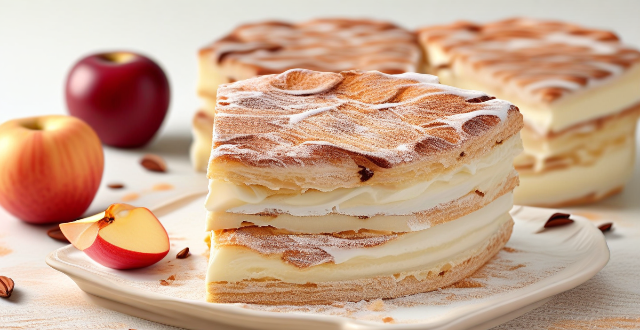
What are some tips for making vegan desserts that everyone will love ?
To make vegan desserts that everyone will love, consider these tips: use natural sweeteners like maple syrup and agave nectar for rich flavor; incorporate nut butters such as almond and cashew for creaminess; experiment with flours like almond and oat for baking; add spices and extracts like vanilla and cinnamon for depth of flavor; utilize fruits like apples and bananas for natural sweetness; use dairy substitutes like coconut milk and almond milk for creamy textures; get creative with chocolate by using vegan brands or carob; and focus on texture by adding nuts, seeds, and dried fruits. By following these guidelines, you can create desserts that are not only vegan but also deliciously satisfying.

What are the essential items to include in a grocery shopping list ?
When creating a grocery shopping list, it's important to consider your dietary needs, preferences, and any specific recipes you plan to make during the week. Here are some essential items to include in your list: - Fresh produce like fruits, vegetables, herbs & spices - Meat & dairy products such as chicken, beef, milk, cheese, yogurt, eggs, etc. - Grains & legumes including rice, pasta, quinoa, bread, beans, lentils, chickpeas, etc. - Pantry staples like oils & vinegars, baking supplies, snacks - Beverages like water, coffee & tea, juices & sodas - Personal care & household items like toiletries and cleaning supplies Customize your list based on your personal preferences and dietary restrictions. Happy shopping!
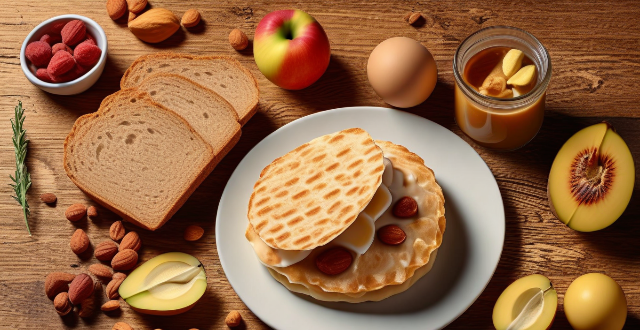
Are there any gluten-free breakfast alternatives that are also healthy ?
Gluten-free breakfast alternatives include oatmeal, eggs, yogurt with fruits and nuts, smoothies, and pancakes made from almond flour. These options provide essential nutrients such as fiber, protein, calcium, and vitamins while avoiding gluten.

What are the most popular vegetarian dinner recipes ?
Vegetarian dinner recipes have become increasingly popular in recent years as people are looking for healthier and more sustainable food options. Here are some of the most popular vegetarian dinner recipes: 1. Lentil Soup: A hearty and filling meal that is perfect for colder months, packed with protein, fiber, and nutrients. 2. Chickpea Curry: A flavorful and satisfying dish that is easy to make, perfect for those who love Indian cuisine. 3. Roasted Vegetable Quinoa Bowl: A healthy and colorful meal that is perfect for meal prep, packed with vegetables, protein, and fiber.